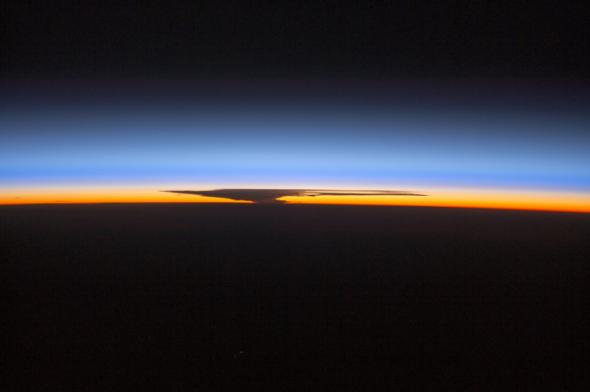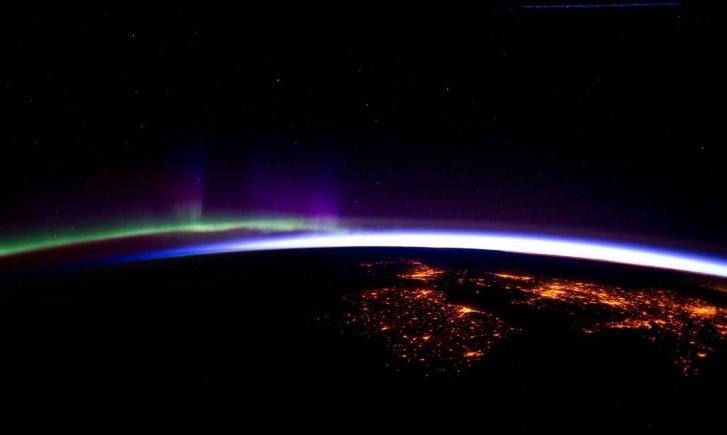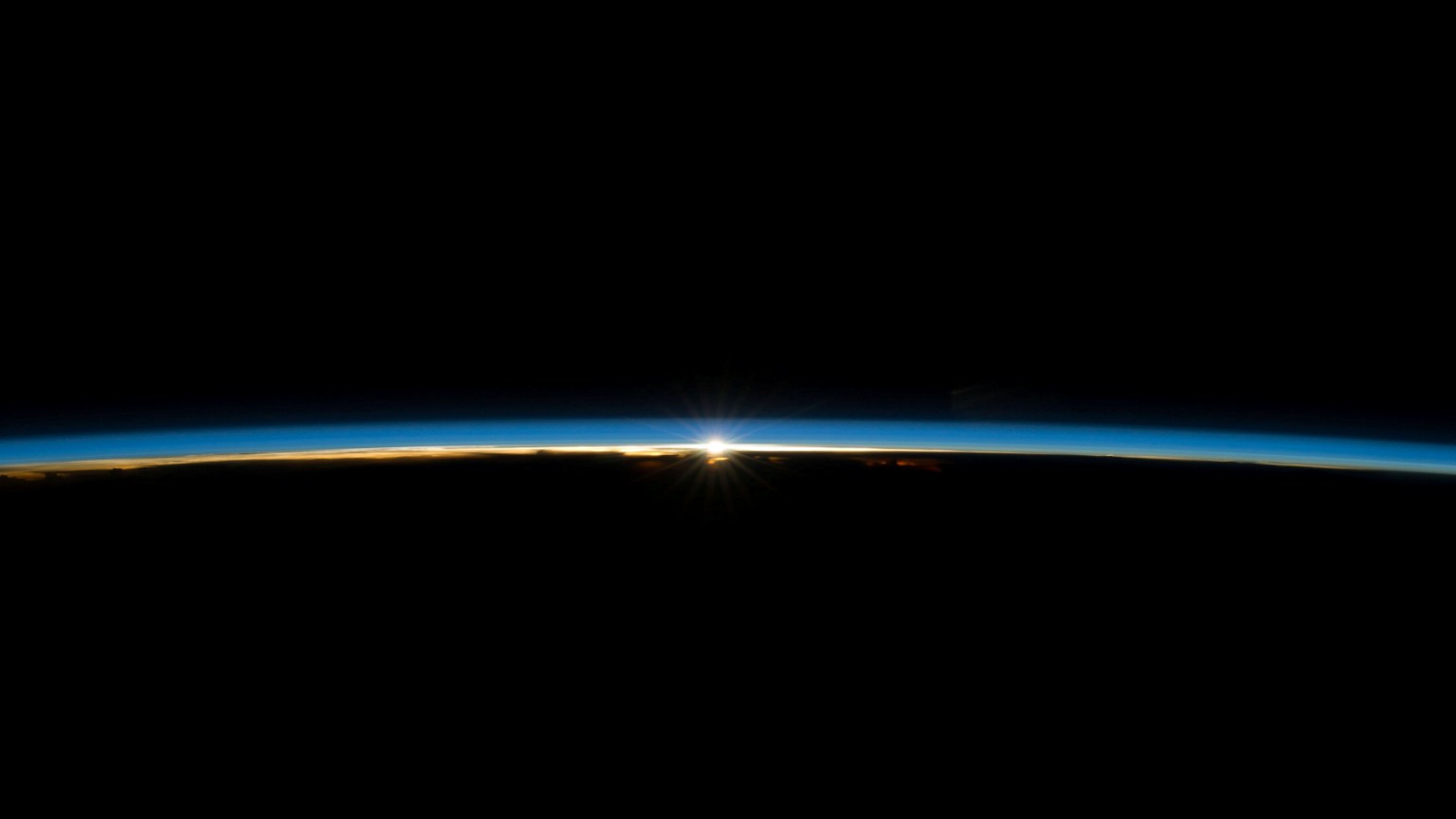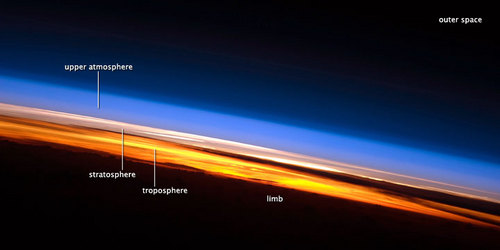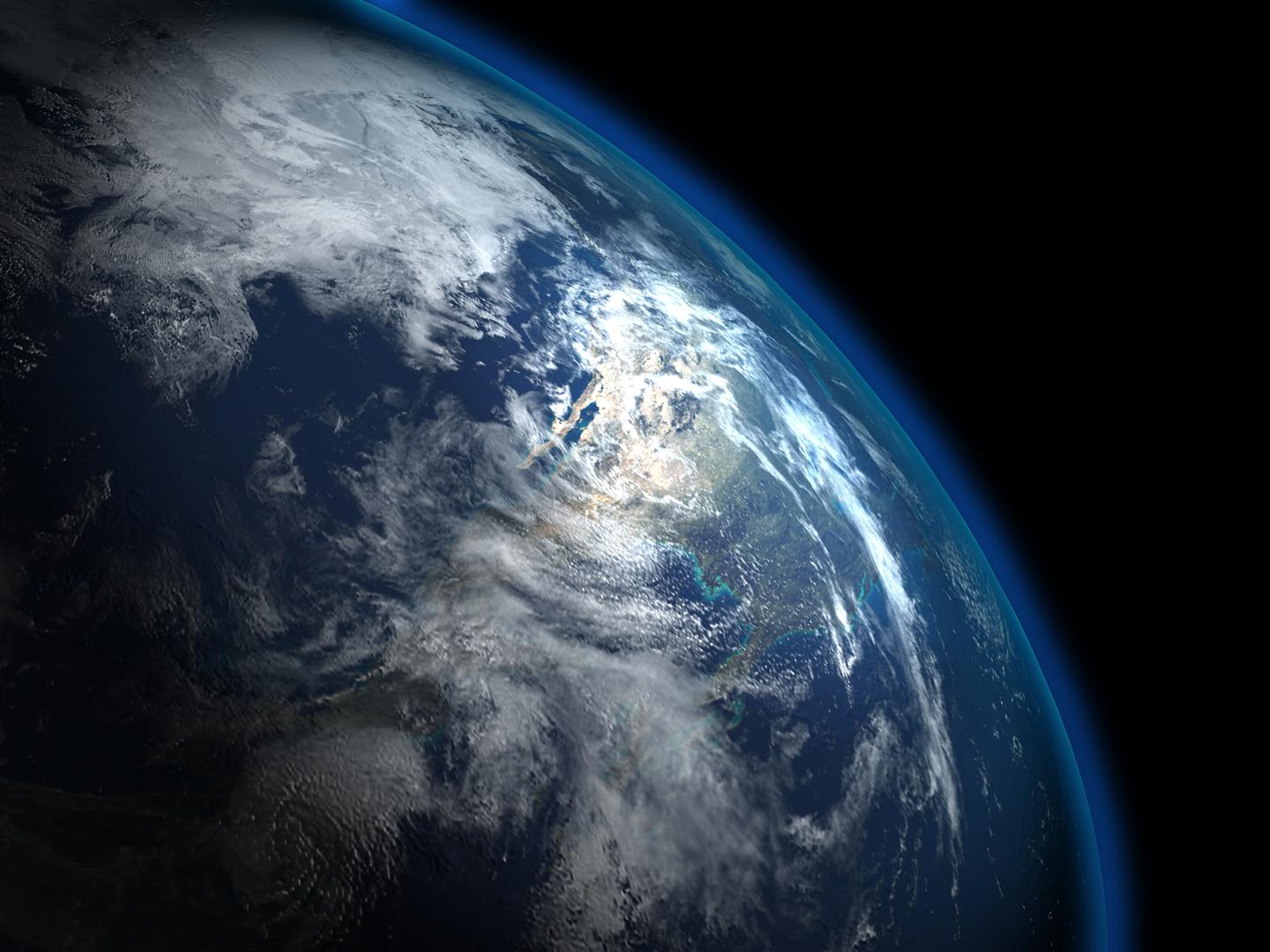Look at how thin our atmosphere is: Difference between revisions
Siterunner (talk | contribs) No edit summary |
Siterunner (talk | contribs) No edit summary |
||
| Line 20: | Line 20: | ||
○ ○ ○ ○ ○ ○ ○ ○ ○ ○ ○ ○ | ○ ○ ○ ○ ○ ○ ○ ○ ○ ○ ○ ○ | ||
[[File:Earth's atmosphere 1536x864.jpg | link=http://www.greenpolicy360.net/ | [[File:Earth's atmosphere 1536x864.jpg | link=http://www.greenpolicy360.net/w/File:Earth%27s_atmosphere_3840x2160.jpg]] | ||
; <big><big>''Our Global Trust, Earth's Atmosphere, a "thin blue layer''</big></big> | ; <big><big>''Our Global Trust, Earth's Atmosphere, a "thin blue layer''</big></big> | ||
Revision as of 03:56, 7 March 2015
- A Thin Blue Layer
A Thin Blue Layer ... Thin Blue ... The "Thin Blue Layer" that protects our home planet
A Moment of Thanks for Earth’s Atmosphere / On Thanksgiving, November 2014
○ ○ ○ ○
- Environmental Security
New Definitions of National Security: Environmental Security
"Look at how thin our atmosphere is. This is all there is between humankind and deadly space." -- Astro_Alex Gerst
○ ○ ○ ○ ○ ○ ○ ○ ○ ○ ○ ○
- Our Global Trust, Earth's Atmosphere, a "thin blue layer
GP360: "Look at our atmosphere around the earth, twelve miles high in the troposphere..."
October 2014 - Live Astro Gerst blog
GreenPolicy360, from AstroGerst
Images revealing atmospheric 'height', the narrow band of life-giving atmosphere surrounding Earth
Astronauts often comment on the thinness of the Earth’s life-supporting envelope, and how it suggests the fragility of our planetary ecosystem. They also note that the number of atmospheric layers they can detect with their eyes is much greater than what their photographs show.
One of the earliest known implications of space travel noticed by returned astronauts is what author Frank White has called the “overview effect.”
“For the first time in my life, I saw the horizon as a curved line. It was accentuated by a thin seam of dark blue light: the atmosphere,” said Ulf Merbold, a German astronaut who flew on Space Shuttle Columbia in 1983. “This was not the ‘ocean’ of air I had been told it was. … I was terrified by its fragile appearance.”
Frank White has made the overview effect a life philosophy. He’s helped found the Overview Institute, an organization dedicated to immersive space-related art and media that will allow the rest of us Earth-bound landlubbers to experience the transcendent insights that, until now, has been possibly only by space travel...
- Earthviews
Astronaut Gerst: Some things that on Earth we see in the news every day and thus almost tend to accept as a “given”, appear very different from our perspective. We do not see any borders from space. We just see a unique planet with a thin, fragile atmosphere, suspended in a vast and hostile darkness. From up here it is crystal clear that on Earth we are one humanity.
Alexander Gerst on the #ISS writes home in tweets and his live blogging... Our "Blue Dot"
◊
Isn't It About Time? ... We are in the first era of geo-monitoring the thin blue atmosphere, earth systems and biosphere from space... [5] [6]
Beginning with first-ever images of our home planet, Earth, taken from the Apollo era... [7] [8]
Now follows #Earth360 continuing first-generation data and #sustainability realizations
An #EarthPOV, an "Overview" that, over time, will educate and open us to new challenges
Our generation welcomes new possibilities as citizens of the planet...
A "paper thin" layer absorbing the sum of human-produced hydrocarbon & emission "externalities"
File:Above Earth, 27.4 degrees south lat, 110.1 degrees west long.jpg
_ _ _ _ _ _ _ _ _ _ _ _ _ _ _ _ _ _ _ _ _ _ _ _ _ _ _ _ _ _ _ _ _ _ _ _ _ _ _ _ _ _
Tag: #BlueDot #BlueMarble #EarthPOV; #Overview; #Troposphere; #ThinLayer
Permalink: http://www.greenpolicy360.net/w/Look_at_how_thin_our_atmosphere_is
◊
- Pages with broken file links
- EOS eco Operating System
- Earth Observations
- Earth Science
- Environmental Security, National Security
- New Space
- Planet Citizen
- Planet Scientist
- ThinBlueLayer
- Atmospheric Science
- Biogeosciences
- Climate Change
- Cryosphere
- Geophysics and Geochemistry
- Mineralogy
- Geology
- Geophysics
- Hydrology
- Natural Resources
- Ocean Science
- Planetary Science
- Space Science and Space Physics
